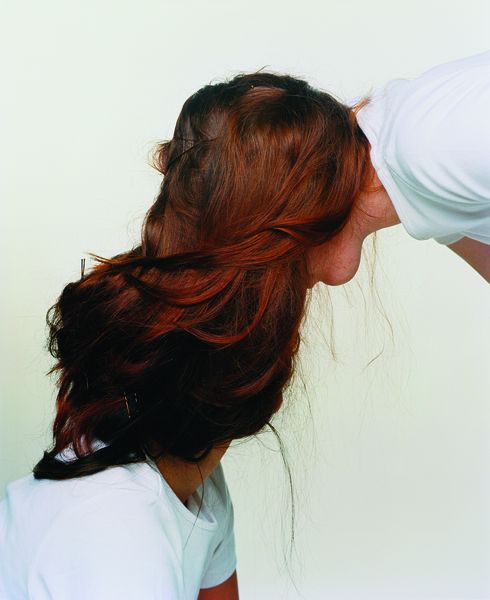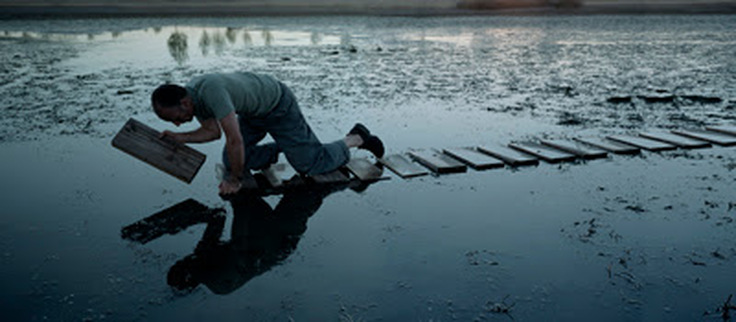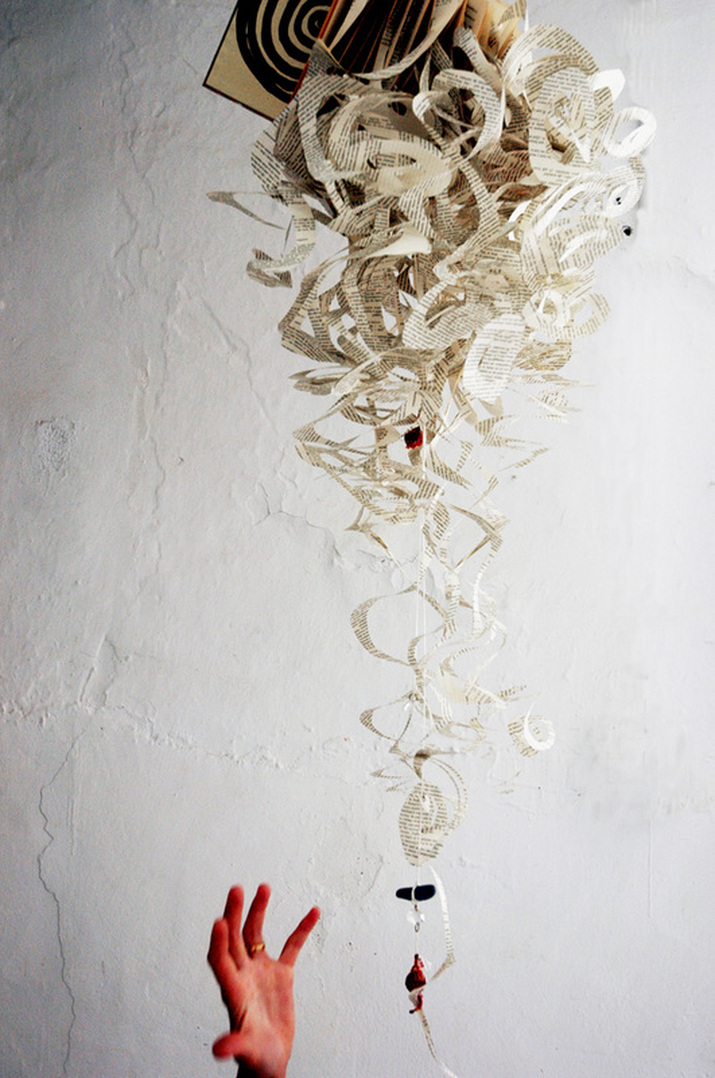| Ouka Leele, important member of Movida Madrileña, has defined a contemporary approach to seduction located between provocation and playing with the concept of beauty coloring black-and-white photographs with watercolors. | Naia del Castillo, "I do believe that the daily acts are far away of being peaceful. They are sitting entirely on the side of violence, the violence of conformity, of the adherence to models, the violence of the social consensus and the contempt it conceals within." | Juan Fontcuberta, has dedicated his work to uncover the mechanisms of deception through photographic manipulation. He himself says that his work is intended as a kind of vaccine against excessive realism of photography. |
|
FOR YEARS, CONTEMPORAY PHOTOGRAPHY have played a substantial role in Spain's avant-garde culture. The sociocultural movement La Movida released a wave of suppressed creativity and tested the boundaries of freedom. Spanish photography is still outstanding. Today one is truck by the innovative and intense expression of contemporary Spanish photography which reflects the radical development that has taken place in Spain. In just a few decade, a closed society has been transformed into a multifacetted country in which contemporary culture enjoys a strong position (source: Estelle af Malmberg),The photo above is by Cristina Lucas. Below is a small selection of some of Spain's currently active and interesting photographers. Ramón Masats, born 1931 in Barcelona and a conscious witness to over five decades of Spanish history, has had, and still has, an enormous influence on later Spanish generations of photographers. Montserrat Soto, b. 1961, since the beginning of her career Montserrat Soto has focused on the use of photography as a starting point for the exploration of space as a receiver and transmitter of emotions. She is an artist whose work is intimately related to human experience through absence, traces and vestiges. Javier Vallhonrat: "I think the world holds many secrets, we are very mysterious creatures in a mysterious world, though some endeavors to dream that everything is in wikipedia and in the end we will believe that the reality is that it fits in google.So I like that all the photos that interest me look bad on the internet".
1 Comment
Everything is connected. I have a house full of books, I am not kidding. I have given books away, left them at strange places, made art of them, and used them as building material. But they still seem to multiply, and I am constantly left without enough shelve space. Most of my books are full of pictures. They are on art, on design, craft… but there are also quite a few on history, philosophy, politics, some special novels I can’t part with – and poetry. It makes me happy when I see visitors engaged in a book they've pulled out, or when they disappear up into their rooms, or out into the garden, with a couple well-chosen volumes under their arm. Books are good friends. Our very first workshops a few years ago were on Artists’ Books. There are still traces from these around the house. Last month we had a week on creative writing. Participants, and teachers, hung around the big table discussing plots, metaphors, seduction and the meaning of literature. And last week we had Kerstin here, giving lectures on the memories of Al-Andalus. While discussing the history of Córdoba - merely an hour away from Málaga - the subject of books, of course, came up. Kerstin told us about how books and papermaking spread westward across Africa to Al-Andalus, and about Al-Hakam, the famous Umayyad Caliph of Spain, and his rich collection of books that laid the foundation for intellectual study in Spain. In the 10th century Al-Hakam II opened up library after library. In addition, poets, many of them born and raised in Córdoba, had a tremendous political influence. They were treated with a respect unheard of - and, sometimes sent in exile because of their potential political danger. Córdoba with its libraries had become the intellectual center of Europe. People bought, wrote, and collected books. The libraries grew with rapidity -- even though books were still copied by hand! It is said that the city was famous for housing libraries with well over 400,000 books while having a population of 100,000, making it one of the most splendid cities in the world at the time. So, thinking about it, I take it back. I do not have a house full of books. It’s merely a drop in the ocean. But I love them all. Photo by H.Vigil. Kajsa-Tuva Henriksson´s result from workshop Artist's Books @ laCultura.
CUTARTE – a new art gallery for creative people of all ages in Cútar
On 17th of March a new art gallery opens in the village of Cútar with an exhibition by professional artists living in the area. The gallery is a new facility which it is hoped will be used to exhibit the work of all creative people in the community – artists, designers, photographers and craftspeople, both professional and amateur. The first exhibition will include work by Belén Alacon, Judy Farrar, Jonathan Thornhill. Helén Vigil, Rudy Vigil and Ann Westley The exhibition will open with drinks and snacks on 17th of March between 6 and 9pm. It will then be open every day until Saturday 24th March. Opening hours are Monday – Friday 17.00- 20.00 Sunday 18th and Saturday 24th 11.00 to 14.00 and 17.00 to 20.00 Entrance is free for all and everyone is very welcome . ARTE-CENTRAL on the net invites you to view a collection of contemporary art, crafts and design and to meet both emerging and established artists and designers who live and work in Andalucía, in Southern Spain
Arte Central is a new art space in Axarquia, where artists and designers in the area will show their work, and celebrate the arts through innovative events.
It will be a place to be curious about the arts, crafts and design, to explore with friends, get ideas, or enjoy a cup of coffee. Currently they are looking for the best space for the new gallery - please contact Arte-Central if you have suggestions. [email protected] 'Symmetries of a Space', photos by Antonio Perez There are plenty of museums in Malaga. 'Museum of Malaga' was set up to display the constant archaeological discoveries in the area around the Alcazaba and Roman Theatre in Malaga. The museum has two sections. The archaeological section is located on Avenida de Europa. The fine arts section can be found at the Palacio Episcopal and includes works by Delgrain, Belgrano and Nogales Sevilla – but here they also display smaller temporary exhibitions, often with contemporary artists. July 15 – Aug 15, 2011, a photographic exhibition organized within the framework of cooperation between Andalusia and the North of Morocco is on display. It’s a collection of snapshots, taken by the photographer Antonio Perez. Through a succession of contrasting images representative of both regions the exhibition shows the geographical contiguity, cultural and social cooperation between Andalusia and Morocco. It has been exhibited in Tetouan and will also be in Cadiz. Which side is Andalusia? Which side is Morocco? a meeting place for entrepreneurs, artists and cultural managers
Back in 2006 the City of Malaga built a temporary building that would house retailers from the Atarazanas Market, one of the symbols of the city, while it was rehabilitated. The renovation work lasted until 2009 and, following its completion, the demolition of the temporary structure was ordered However, a community of developers, led by Martin Moniche, have begun a campaign and building a network in order to recycle the structer as a meeting place for entrepreneurs, artists and cultural managers. See this video |
Categories
|




























 RSS Feed
RSS Feed

